#lutung
Text

Taxidermy Hanuman langur
By: Unknown photographer
From: The Journal of Heredity
1910
23 notes
·
View notes
Photo

Delacour’s Langur
#delacours langur#langur#delacours lutung#Trachypithecus delacouri#Primates#Haplorhini#Simiiformes#Cercopithecidae#Trachypithecus#upl
60 notes
·
View notes
Text

Silvery lutung (Trachypithecus cristatux)
This arboreal monkey is found in wetland forests, including mangroves, coasts, rivers, and swamps, across several Indonesian islands. They are far more specialised for eating plants than most primates, with ridged teeth and a multi-chambered stomach. Juvenile silvery lutungs are bright orange, a stark contrast to their adult grey colour.
#markhors-menagerie#primates#old world monkeys#monkeys#animal facts#fun facts#animals#biology#langur#silvery lutung
22 notes
·
View notes
Text








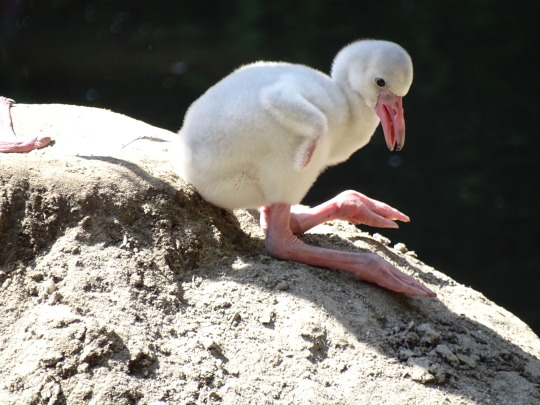


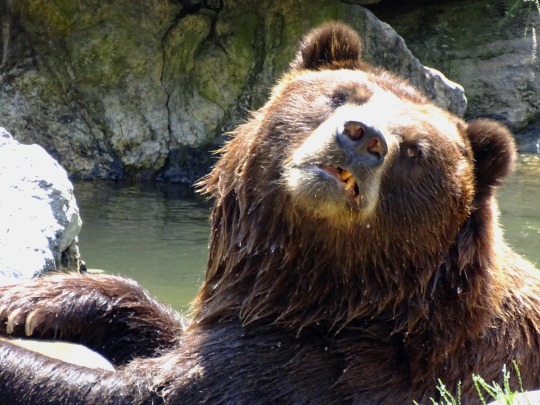



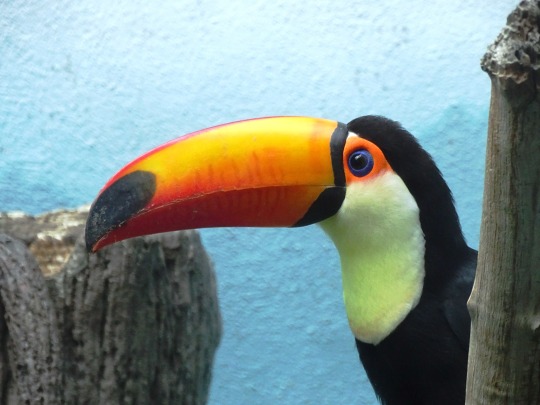

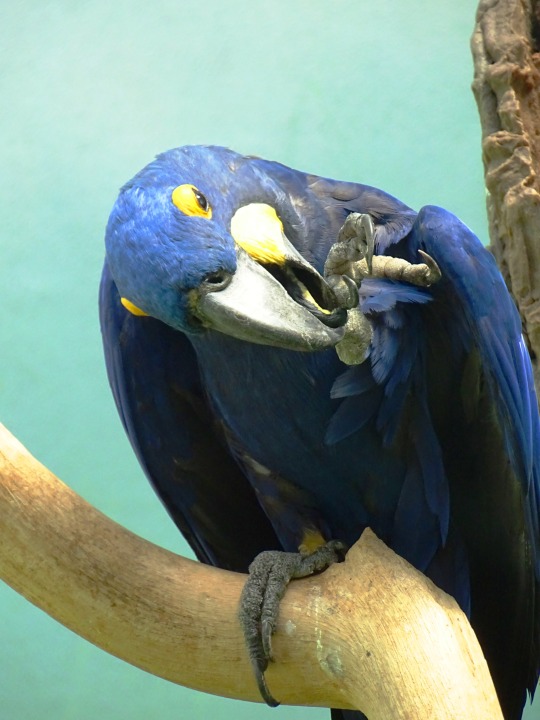



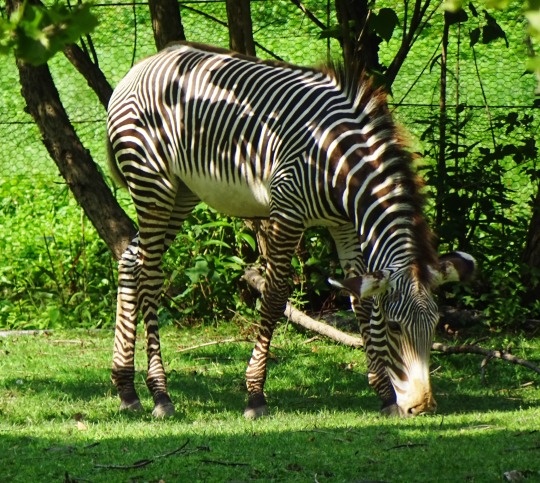
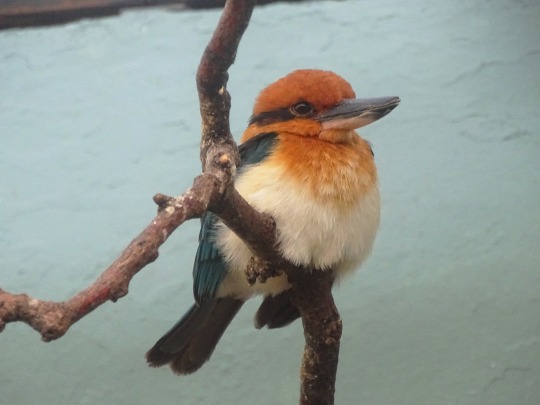

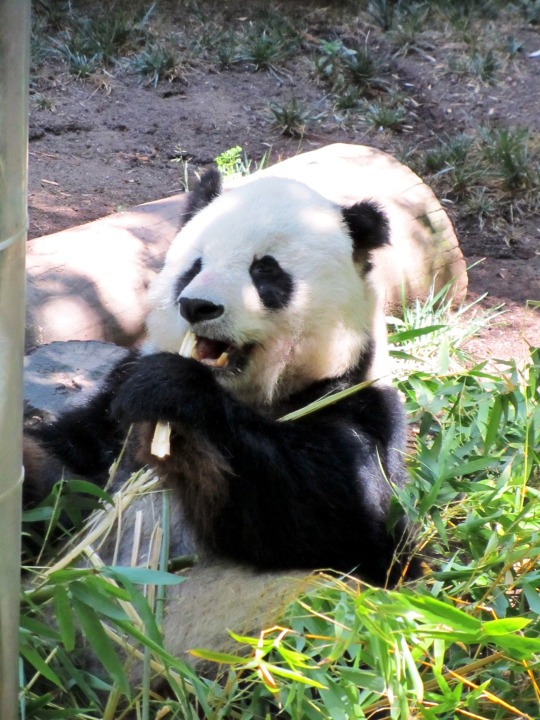
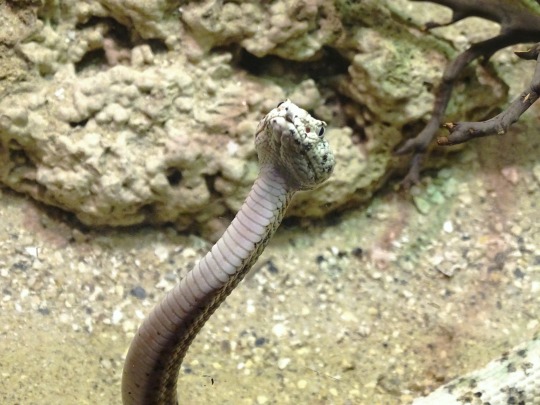


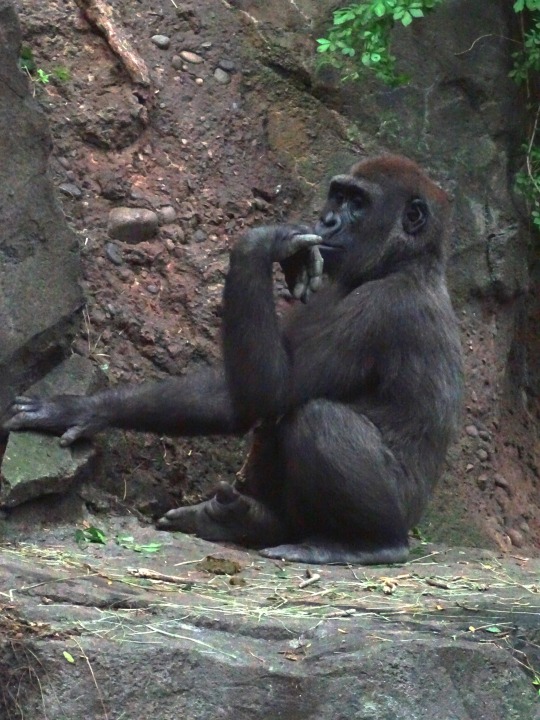

National Zoo Lovers Day
National Zoo Lovers Day, celebrated on April 8 in the U.S. brings all the zoo animal enthusiasts together to celebrate this significant day! Do you know how many animals were saved by zoos from going extinct? Yes, zoos are more than just conservation sites for endangered species, they also provide educational, research, and entertainment purposes. We can trace the history of zoos back to 4000 B.C. If you love animals, then this holiday is just for you. Visit a zoo nearby to find out about your favorite animals; you can also ask to volunteer at a zoo!
History of National Zoo Lovers Day
In the 7th century B.C, the Greeks had the habit of caging animals. ‘Alexander the Great’ sent many animals caught on his military expeditions to Greece. The earlier Egyptian and Asian zoos were kept mainly for public visitors and secondarily used for research purposes. During the 4th century B.C., the Greeks were more concerned with the research and experiment of captivated animals. The Romans had two different animal collections for arena and research objectives.
After the Roman Empire, zoos faced a downfall, but some private collections existed by Emperor Charlemagne in the eighth century and Henry I in the 12th century. King Philip VI had a menagerie in the Louvre, Paris, in 1333. Many members of the house of Bourbon had animal collections at Versailles. Later in 1519, a zoo was discovered in Mexico, which habituated birds, mammals, and reptiles. It was maintained by 300 zookeepers. In 1752, the Imperial Menagerie was founded at the Schönbrunn Palace in Vienna as the first modern-day zoo.
In 1828, two years after the Zoological Society of London was founded, the collection was created in Regent’s Park. By the mid 19th century, zoos were established worldwide. Among the existing zoos of today, more than 40 zoos are 100 years old. Most of these old zoos are in Europe. Since the end of World War II, there has been a fast and worldwide growth of zoos, many of which serve the purpose of public entertainment and economic gain rather than animal research. The exact number of public animal collections across the world today is unknown, although it is believed to be in the thousands.
National Zoo Lovers Day timeline
3500 B.C.
Hierakonpolis Zoo
The strange animal remains discovered near Hierakonpolis, Egypt's ancient capital, suggest the existence of a huge, exotic predynastic zoo.
1500 B.C.
First Real Zoo
Queen Hatshepsut establishes the first real zoo in Egypt.
30 B.C.
The Rise Of Private Zoos
From the shreds of evidence found in Egypt and Mesopotamia, private zoos show status among the wealthy in Rome.
1874
America’s First Zoo
America’s first zoo opens in Philadelphia, Pennsylvania.
National Zoo Lovers Day FAQs
Why do we need zoos?
Zoological gardens are needed to preserve biodiversity. Zoos provide a home to exotic endangered animals and have a history of saving many animals from being extinct.
Why are pet animals not allowed in the zoo?
Pet animals are not allowed in the zoo for various reasons. It can affect the health of zoo animals. Pet animals can be agitated by strange sounds, sights, and smells, which can bring out harm to anyone around.
Can I bring home the adopted animal?
Unfortunately, you cannot. The animals in the zoo cannot be brought up in a domestic household. You will be providing financial support for the animal you have adopted.
How to Celebrate National Zoo Lovers Day
Volunteer: Well, the greatest pleasure you can gain on National Zoo Lovers Day is by volunteering at a local zoo. It is a great opportunity to have a close observation of animals.
A family picnic: A great occasion to have an interesting yet informative family picnic. Take this opportunity to explore unique and exotic animals. You could also share some pictures on social media, spreading the word!
Adopt animals: Many zoos across the world provide animal adoption programs. You can show your love for conserving unique and exotic animals by adopting animals in zoos.
5 Fun Facts About Zoos That’s Sounds Too Good To Be True
Morning walks: Chendra, an Asian elephant in Oregon Zoo, likes to take a morning walk to meet her fellow zoo mates.
Entrance fee: 1/160th of a pound was charged as a zoo entrance fee at The Tower of London back in the 18th century; alternatively, visitors can also provide cats or dogs to feed the lions.
A valorous German Shepard: In 1987, a German Shepherd guard dog defeated an escaped Jaguar in Belgrade Zoo — in this valorous action, the dog saved the life of a zoo employee.
Giant pandas: China contains the ownership of all giant pandas worldwide and they are loaned to other countries at a rental price of one million dollars per pair, per year to raise funds for conservation programs in China.
Disk-throwing chimp: In Sweden, a 30-year-old chimp at Furuvik Zoo collects concrete disks to throw at the visitors.
Why We Love National Zoo Lovers Day
Fun-filled knowledge: National Zoo Lovers day reminds us to explore our local zoos. Every year, millions of people visit zoos and learn about many animals. It also provides a great opportunity for friends and families to have a fun time learning together.
Conserving the endangered: One great thing about zoos is conserving the species at the risk of extinction. An imbalance in biodiversity can bring a disastrous impact on the ecosystem. It reminds us of our responsibility towards nature.
Animal welfare: A wonderful day to remind animal enthusiasts to play their part in animal welfare. An opportunity for providing a large platform to gather support across the world.
Source
#National Zoo Lovers Day#ZooLoversDay#8 April#Bronx Zoo#vacation#my favorite zoo#New York City#summer 2018#2019#original photography#travel#animal#flora#fauna#Grizzly Bear#brown bear#Sulawesi hornbill#lion#inca tern#bald eagle#bird#nile crocodile#tiger#zebra#Silvery lutung#Mandrillus sphinx#Mandrill#close up#USA#tourist attraction
5 notes
·
View notes
Photo

A silvery lutung (Trachypithecus cristatus) in Sabah, Borneo
by Gary Faulkner
#silvery lutung#monkeys#silvered leaf monkey#Trachypithecus cristatus#Trachypithecus#cercopithecidae#simiiformes#haplorhini#primates#mammalia#chordata
16 notes
·
View notes
Photo
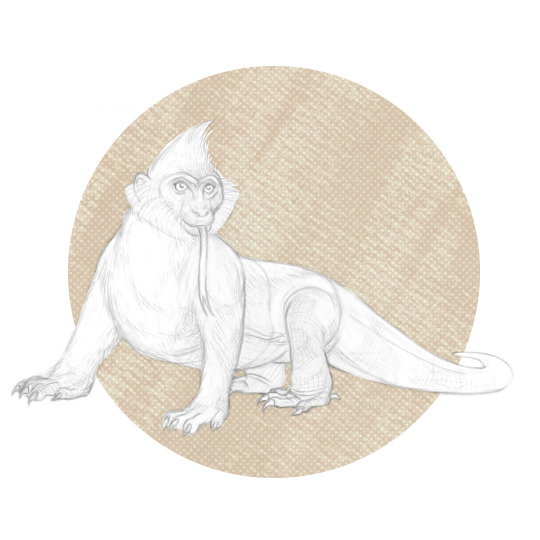
Prompt 17: Desert
The Langur Dragon
For the desert prompt, I'm going up all the way to Just The Zoo of Us episode no. 29, with the featured duo of Delecour's Langur and the Komodo Dragon.
The Langur Dragon tends to prefer hot, dry, rocky areas and while they are most often found in rocky desert island areas, they are quite adaptable and can be found in different habitat zones around the islands they live.
Langur Dragons have been observed to climb and jump around cliffs and rocktops for what seems to be fun or recreational enjoyment, being a bit of a daredevil around the areas they inhabit.
Color Vision:
While I have not colored this creature (yet), I envision their coloring is very similar to the Delecour’s Langur, particularly the iconic white shorts.
Side note: To learn more about the inspiration behind this series, please check out the captions in any of my first three hybrid animals from this month!
#komodo dragon#dragon#langur#monkey#delacours langur#lizard#lizard art#dragon art#desert#delacours lutung#komodo dragon art#langur art#monkey art#hybrid#hybrid animal#animal hybrid#animal artober#animal art#traditional art#pencil drawing#pencil art
4 notes
·
View notes
Photo
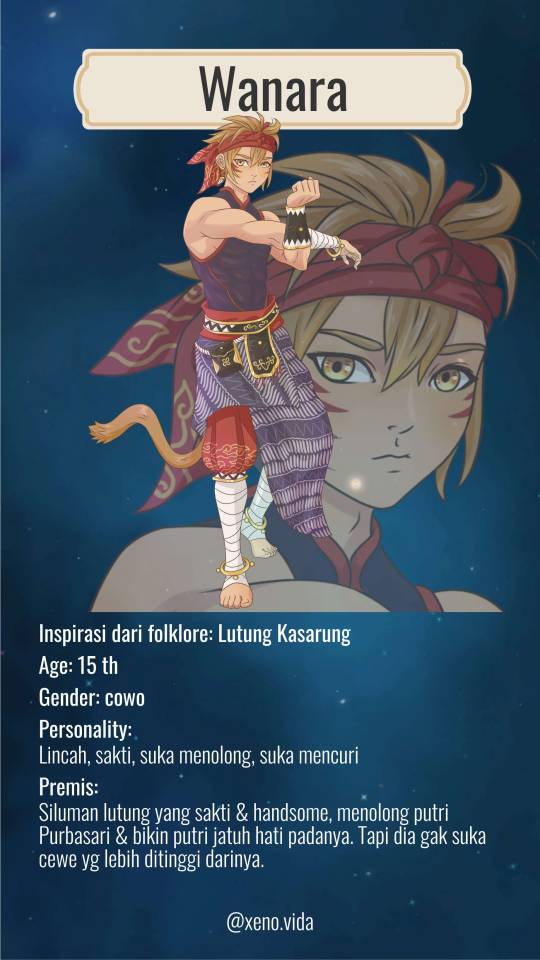
Character design based on Indonesian folklore Lutung Kasarung
1 note
·
View note
Text
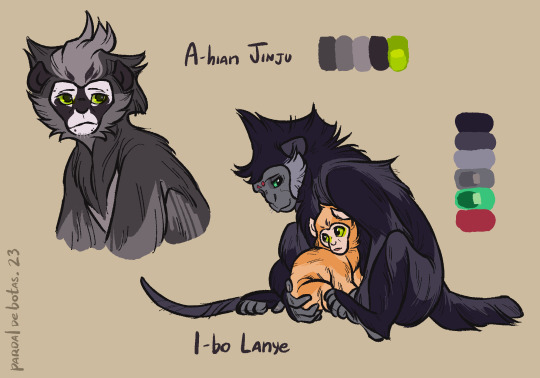

A-hian Jinju, Big Brother Golden-Orange, later Marshal Liu Jinju
(Dusky Leaf Monkey)
Wukong's older brother by age and bond, as they were raised alongside each other. He and Wukong are quite close, and while he has an overall more mellow disposition, he's still quite capable of his own mischief.
Once named Marshal Liu at the return of his younger brother, he wields a Japanese yari, one of the stolen weapons Wukong brings back to Huaguoshan.
He often helps clean up after Wukong's messes in their youth, and once Wukong leaves for his search for immortality, he leaves the troop for a bachelor group. Together they fend off demons and spirits, and despite growing comfortable with being a rebellious leader in his own right, Wukong's return brings him much joy and he gladly bows to his king once more. His own charisma and reputation helped lead many monkeys into Wukong's rule and his support helps solidify the Monkey King's power.
I-bo Lanye, Auntie Orchid-Leaves
(Silvery Lutung)
Biological mother of Jinju and great-granddaughter of Longan, one of Wukong's many many aunties in the troop. She's one of A-ma's favored babysitters to handle Wukong's antics, but she often takes a diplomatic role among their fellow mountain monkeys.
As Wukong builds a proper kingdom at Huaguoshan, she becomes of of the many stewards in Water-Curtain Cave, managing all matters of the mansion on A-ma's name. Everyone knows her word is A-ma's word and even their imp and demon guests know to respect her.
for their names, i played around with google translate and some digging across dictionaries to make a somewhat educated guess of what terms would fit a two-syllable convention. also i'm going for their familial titles in Min Nan Chinese but their names in Mandarin because i'm using Taiwan as inspiration for Huaguoshan and so those terms would have been learned by the monkeys over time out of mostly exposure, while their names were given by either Longan or Wukong, both speakers of Mandarin.
concerning the fact that they are different species, interspecies breeding can sometimes create fertile offspring, as noted in a hybrid discovered recently, but also this is a fantasy story. i'm playing around with monkey species as i go to have some fun with designs and also make the monkeys more diverse and unique.
Jinju uses Japanese weapons because I figure that Wukong went to Japan in order to steal weapons for his monkey army, since it's said that he heads to a kingdom to the east of Huaguoshan and i'm eyeballing some directions to better fit with a real world setting for the story. I tried to place a time for when he'd land, but finding sources for Japanese weapons of that period is a bit hard so I went with my guts and what looked reasonable to expect from the period.
and yes, Jinju is named after the kumquat fruit ajdbjahwbdaw
#jttw#jttw au#jttw oc#xiyouji#journey to the west#marshal liu#Sun clan au#bell dragon art#expedition to the west au
119 notes
·
View notes
Text

Tak ada bosan-bosannya aku kesini untuk sekedar mencari kabut, melihat bunga, atau mencari sate. Kalau beruntung bisa bertemu kera dan lutung hitam, tapi itu sangat jarang terjadi.
Sejuknya, dinginnya, membuatku ingin punya rumah kecil disini. Menjadikannya rumah kedua, ketika lelah dengan kehidupan kota.
Mari kita wujudkan itu... Semoga Allah meridhoi.
22 notes
·
View notes
Text
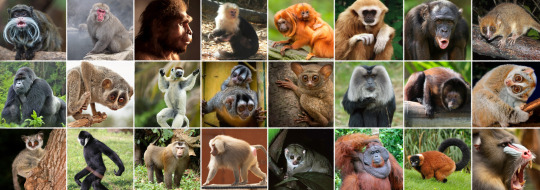
🦍The primate tournament list of candidates has been finalised! Polls will start going up soon!🦧
Thank you to everyone who submitted a species! Here is the full written list:
Basal primates (non-simian primates, including Strepsirrhini and Tarsiiformes)
†Notharctus (Notharctus tenebrosus)
Calabar angwantibo (Arctocebus calabarensis)
West African potto (Perodicticus potto)
Red slender loris (Loris tardigradus)
Bengal slow loris (Nycticebus bengalensis)
Pygmy slow loris (Xanthonycticebus pygmaeus)
Senegal bushbaby (Galago senegalensis)
Brown greater galago (Otolemur crassicaudatus)
Ring-tailed lemur (Lemur catta)
Verreaux’s sifaka (Propithecus verreauxi)
†Archaeoindris (Archaeoindris fontoynontii)
†Megaladapis (Megaladapis madagascariensis)
Madame berthe’s mouse lemur (Microcebus berthae)
Aye-aye (Daubentonia madagascariensis)
Philippine tarsier (Carlito syrichta)
Pygmy tarsier (Tarsius pumilus)
New world monkeys (Platyrrhini)
Wied’s marmoset (Callithrix kuhlii)
Goeldi’s marmoset (Callimico goeldii)
Bearded emperor tamarin (Saguinus imperator subgrisescens)
Golden-headed lion tamarin (Leontopithecus chrysomelas)
Panamanian white-faced capuchin (Cebus imitator)
Central American squirrel monkey (Saimiri oerstedii)
Gray-bellied night monkey (Aotus lemurinus)
Bald uakari (Cacajao calvus)
Madidi titi monkey (Plecturocebus aureipalatii)
Atlantic titi monkey (Callicebus personatus)
Black bearded saki (Chiropotes satanas)
White-faced saki (Pithecia pithecia)
Colombian red howler (Alouatta seniculus)
Brown spider monkey (Ateles hybridus)
Northern muriqui (Brachyteles hypoxanthus)
Yellow-tailed woolly monkey (Lagothrix flavicauda)
Old world monkeys (Cercopithecidae)
Mantled guereza (Colobus guereza)
Zanzibar red colobus (Piliocolobus kirkii)
Nepal gray langur (Semnopithecus schistaceus)
Silvery lutung (Trachypithecus cristatux)
Golden snub-nosed monkey (Rhinopithecus roxellana)
Proboscis monkey (Nasalis larvatus)
Red-shanked douc (Pygathrix nemaeus)
Collared mangabey (Cercocebus torquatus)
Japanese macaque (Macaca fuscata)
Rhesus macaque (Macaca mulatta)
Hamadryas baboon (Papio hamadryas)
Mandrill (Mandrillus sphinx)
Gelada (Theropithecus gelada)
Common patas monkey (Erythrocebus patas)
Bale mountains vervet (Chlorocebus djamdjamensis)
De brazza’s monkey (Cercopithecus neglectus)
Apes (Hominoidea)
Lar gibbon (Hylobates lar)
Pileated gibbon (Hylobates pileatus)
Kloss’s gibbon (Hylobates klossii)
Northern white-cheeked gibbon (Nomascus leucogenys)
Siamang (symphalangus syndactylus)
†Junzi (Junzi imperialis)
Bornean orangutan (Pongo pygmaeus)
†Gigantopithecus (Gigantopithecus blacki)
†Dryopithecus (Dryopithecus fontani)
Western lowland gorilla (Gorilla gorilla gorilla)
Chimpanzee (Pan troglodytes)
Bonobo (Pan paniscus)
†Australopithecus (Australopithecus afarensis)
†Panranthropus (Panranthropus boisei)
†Flores hobbit (Homo floresiensis)
†Neanderthal (Homo neanderthalensis)

The first set of polls will go up as soon as I have finished writing the descriptions! In the meantime, I would appreciate if you could share this tournament around- it won’t be much of a tournament if there aren’t that many people voting! In going down the research rabbit hole I’ve found so many interesting species and stories, and I promise learning about them here will be worth your time!
#primate bracket#tournament#tumblr tournament#poll#polls#primate#primates#extinct primates#biology#animals#zoology#please let me know if I made a mistake anywhere!
98 notes
·
View notes
Text

Purple-faced langur
By: W. S. Berridge
From: The Book of the Animal Kingdom
1910
#captivity#purple-faced langur#lutung#old world monkey#primate#mammal#1910#1910s#W. S. Berridge#The Book of the Animal Kingdom (1910)
49 notes
·
View notes
Text
JURNAL P5!!
halo semuanya, nama saya Army Shinta Jelita kelas 94. Kali ini saya akan menceritakan ke seharian saya selama P5
Hari ke 1
Kami membuat kelompok yang ketua dan wakilnya di tentukan oleh walikelas, kami mengerjakan asessmen dan membuat PPT tentang Bhinneka Tunggal Ika lalu di presentasikan di depan kelas.
Hari ke 2
kami disuruh untuk mengenal lebih jauh tentang diri sendiri dengan cara mendeskripsikan siapa diri saya lalu di kirim melalui padlet. Kemudian mengerjakan tugas untuk mengisi tanda tangan yang sesuai dengan pernyataan, setelah itu kami membuat infografis yang berhubungan dengan SARA ataupun INDIVIDU.

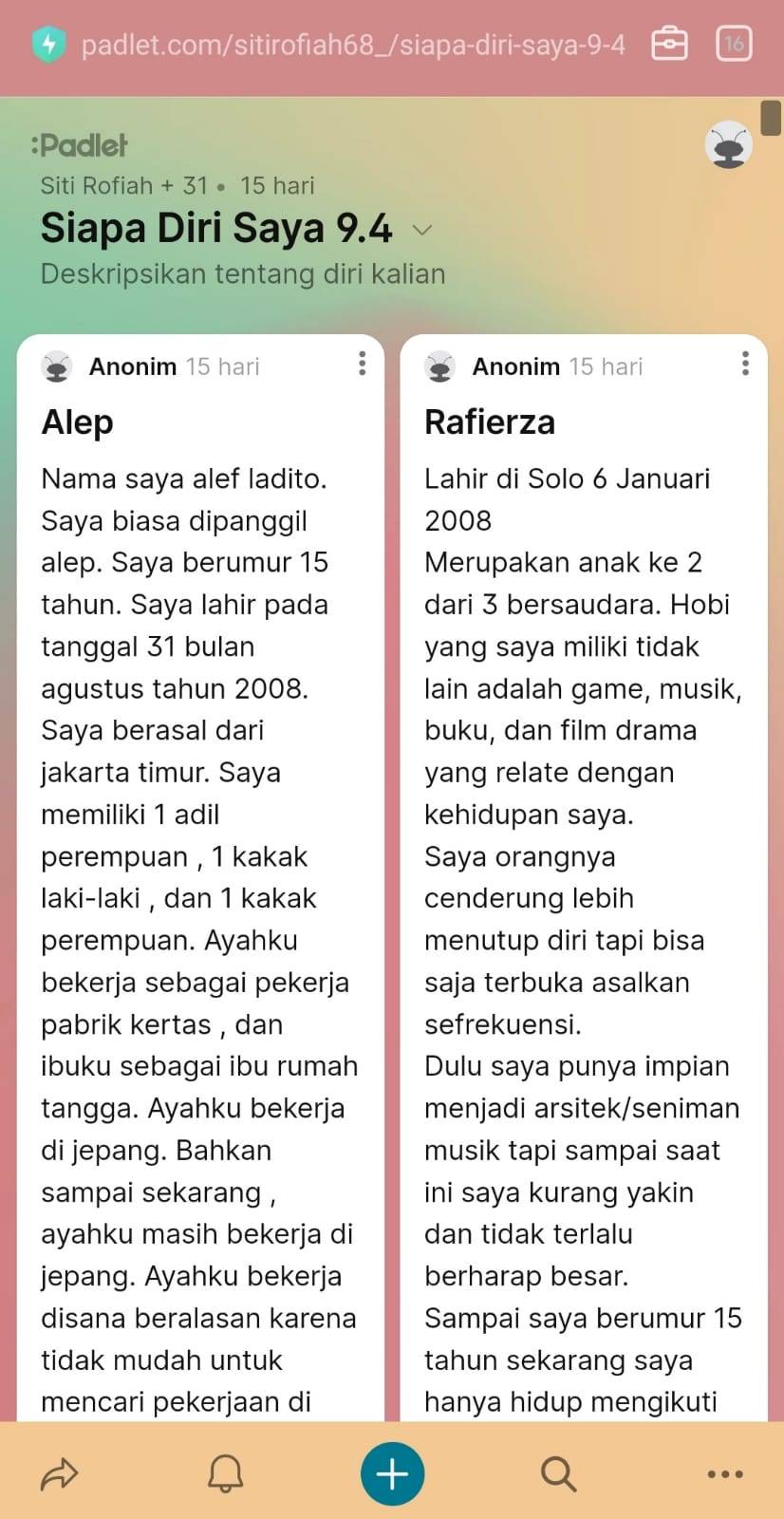
Hari ke 3
kami secara individu membuat infografis tentang provinsi yang ada di Indonesia. Lalu kami memilih salah satu provinsi dari Indonesia untuk menarikan dan menyanyikan lagu daerah dari provinsi tersebut, dan di presentasikan di depan kelas
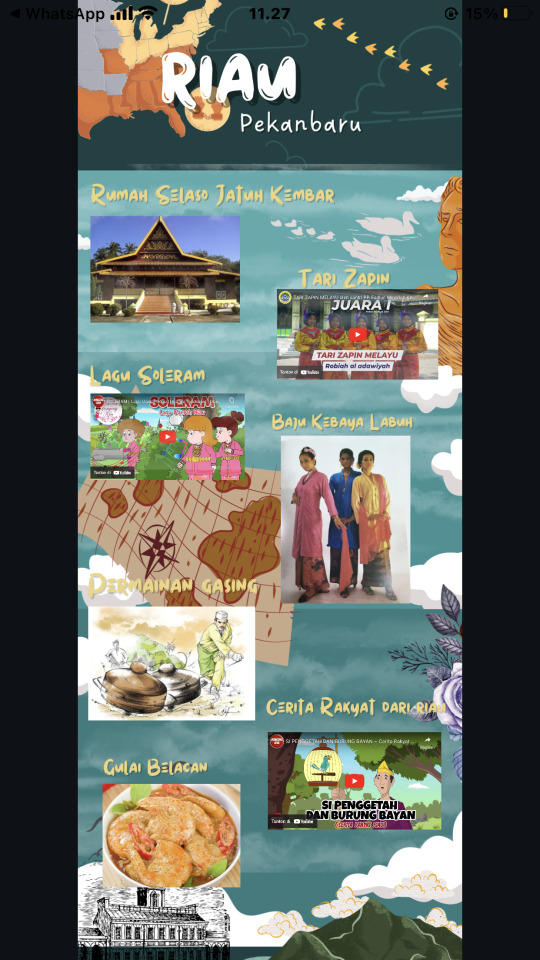
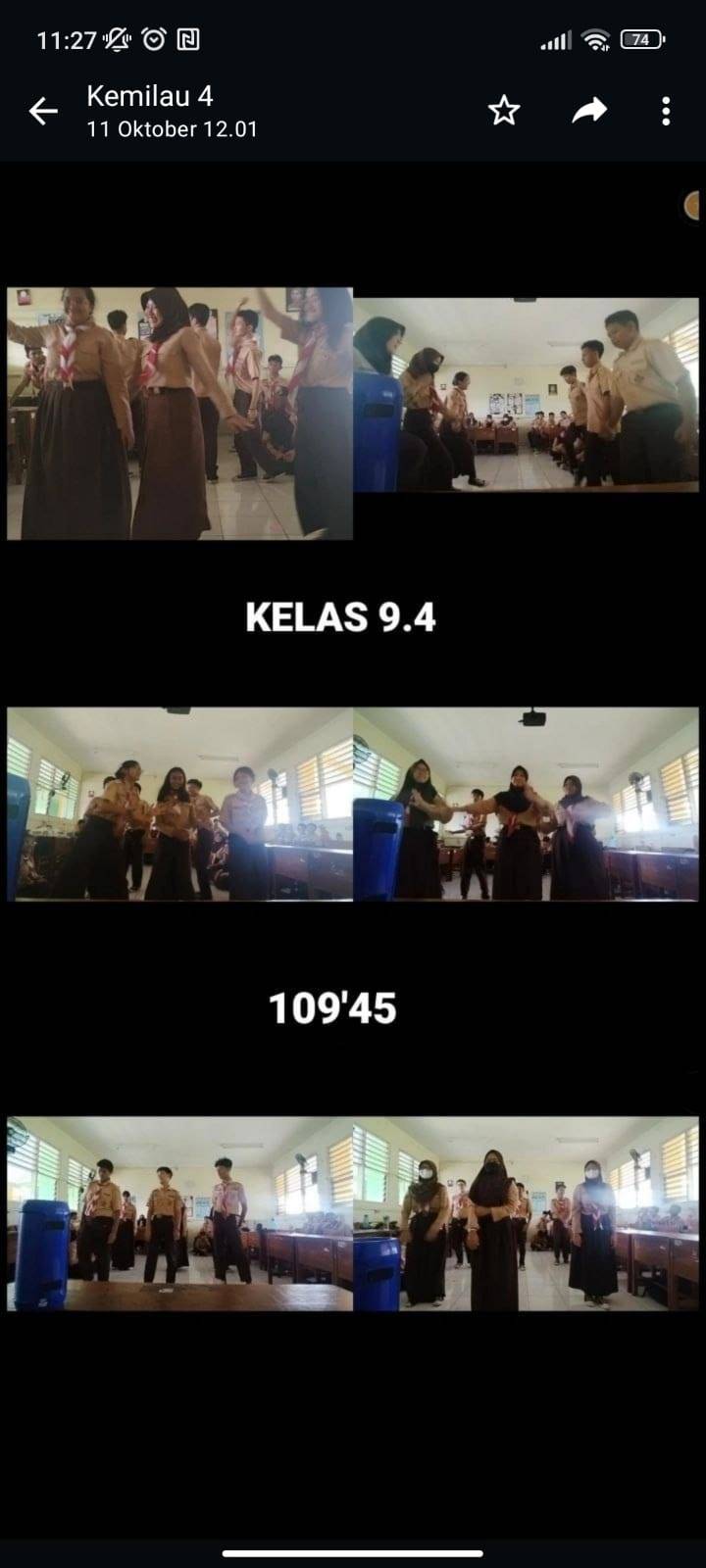
Hari ke 4
kami membuat kording ( Koran Dinding ) yang bertema Bhinneka Tunggal Ika.
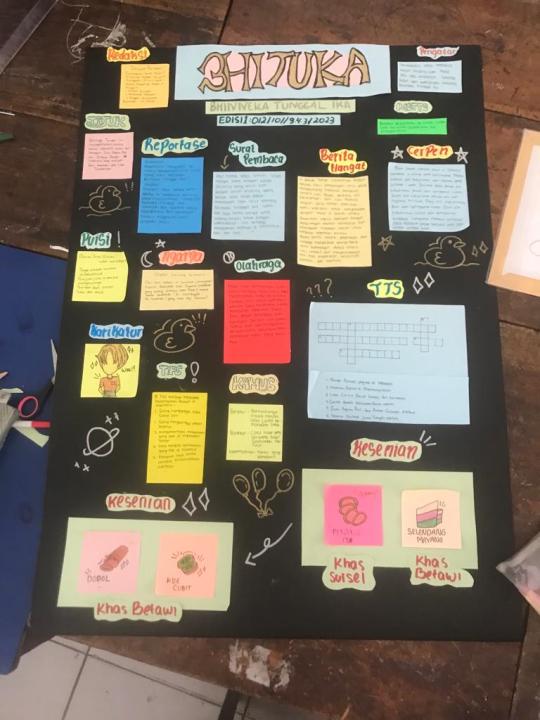
Hari ke 5
kami memilih cerita rakyat dan pemeran nya untuk menampilkan drama di depan panggung

Hari ke 6
kami menentukan sekbid drama dan membuat ppt masing masing tugas sekbid
Hari ke 7
kami mengisi link Bacaan Literasi Bhineka Tunggal Ika
Hari ke 8
kami sudah mulai menyiapkan properti untuk drama dan mulai latihan untuk pementasan drama
Hari ke 9
kami masih menyiapkan properti dan mulai latihan untuk drama, namun kami lebih fokus ke latihan drama
Hari ke 10
kami masih latihan untuk pementasan drama, dan kami mulai latihan dengan lebih serius
Hari ke 11
kami menyaksikan pementasan drama dari kelas lain, dan setelah menyaksikan drama, kami kembali latihan untuk yang terakhir kali
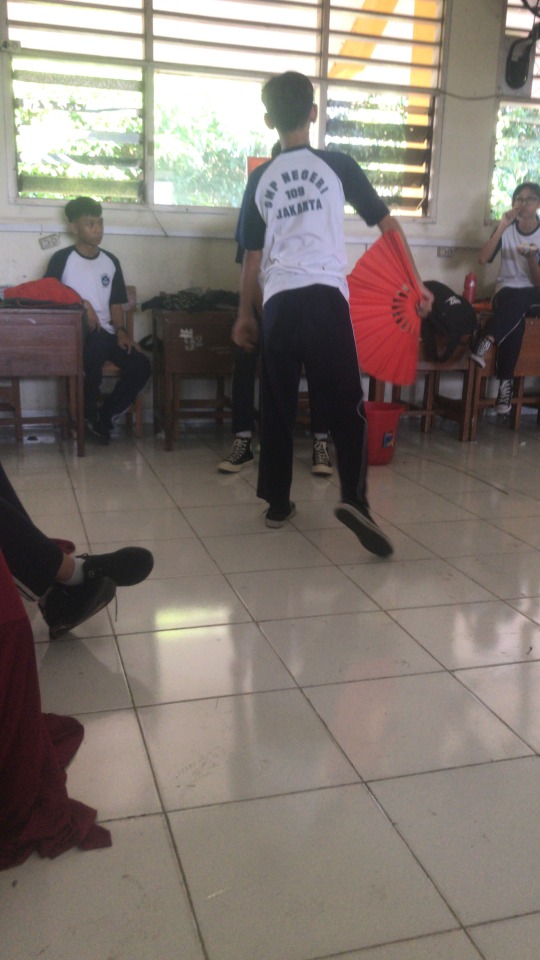
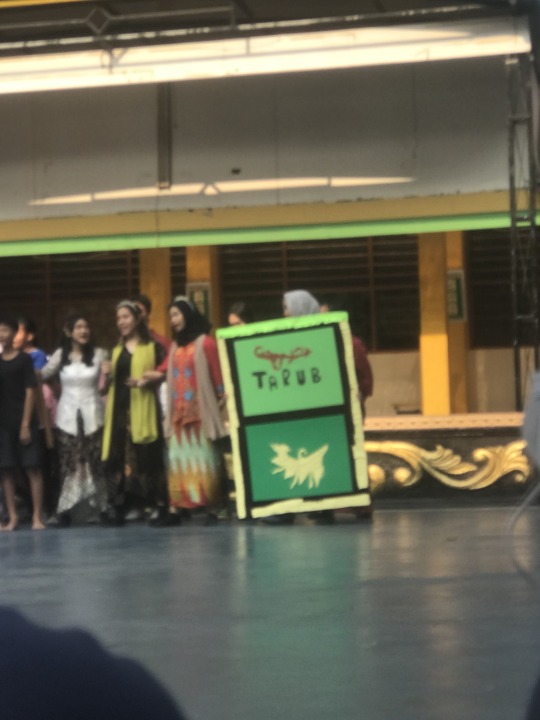
Hari ke 12
kami menampilkan drama cerita rakyat dari kelas kami yang berjudul Lutung Kasarung
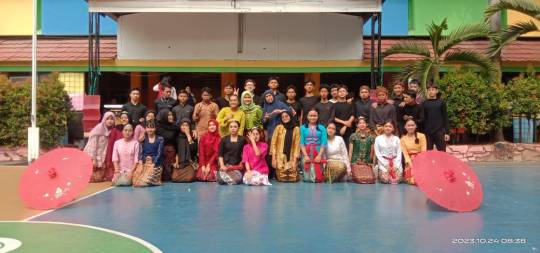
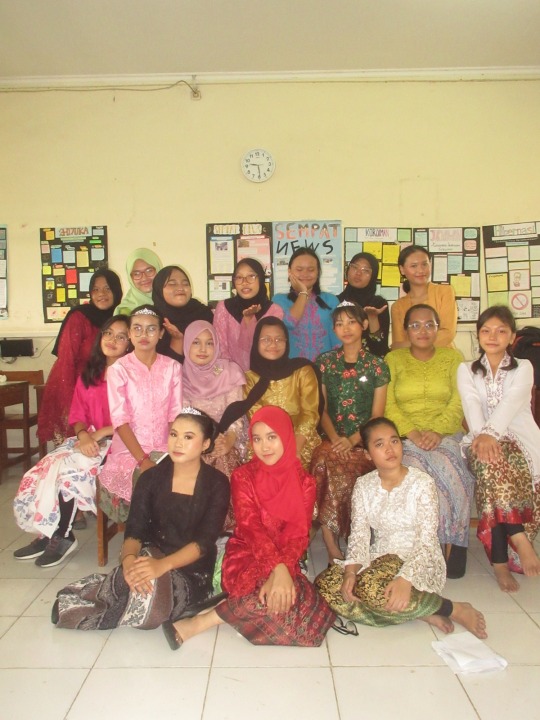
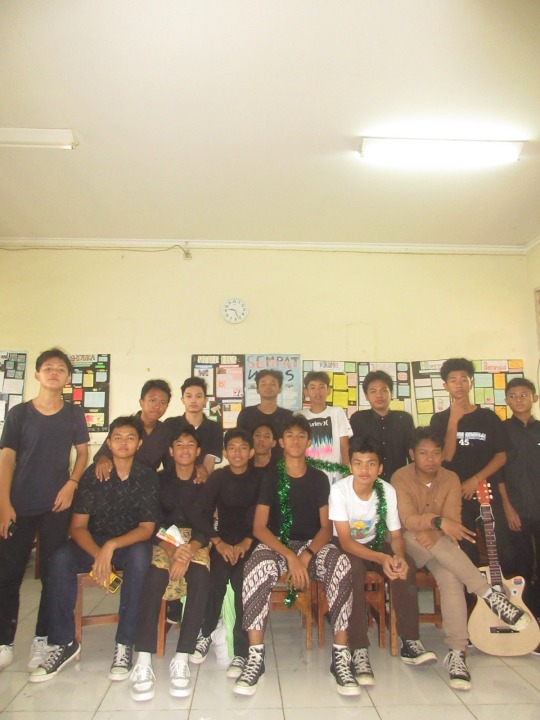
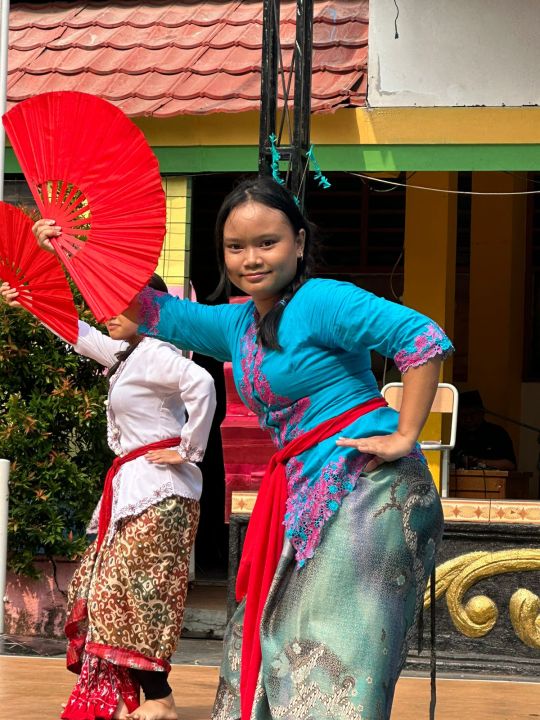
Hari ke 13
kami mengenakan pakaian profesi ataupun adat lalu berkeliling (karnaval). Lalu kami mengerjakan tugas individu dan juga tugas kelompok membuat ppt

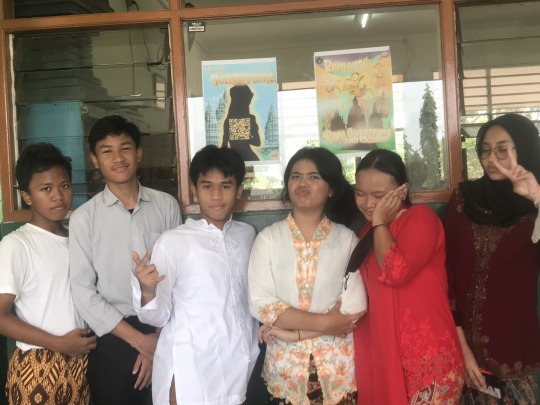

2 notes
·
View notes
Text
Name: Mr. Kory Casale
Color: Punch #F25278
Symbol: broken book
Strife Specibus: broomkind
Handle: creepyGambado
Animal: lutung
Pronouns: she/her
Age: 54
Birthday: 22th day of the year
Sexuality: bisexual
Interests: watch making and kayaking
Dream Moon: prospit
Classpect: Knight of Blood
Land: Land of Wind and Ghosts, an excited place, with bewildering Jeweled Lacerta consorts. It is a place full of faith and tame sand. Hephaestus lurks.
Instrument: riqq
via homestuck-human-generator https://ift.tt/FgMCeVN
2 notes
·
View notes
Photo







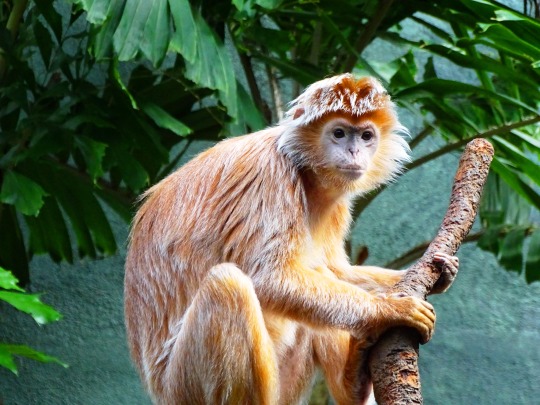


Monkey Day
Spend a day at the zoo with these cheeky creatures, throw a monkey-themed fancy dress party or fundraise to protect these precious primates.
Monkeys are interesting creatures – cute, mischievous, and sometimes downright obnoxious (anyone who disagrees has obviously never had their laundry torn down by a family of primates when it’s hanging to dry). Many species of primates are also endangered, and then there are questions of animal rights and the usage of primates in medical research. That’s why there’s Monkey Day, a day that’s been dedicated to raising awareness about non-human primates.
Learn about Monkey Day
Monkey Day has been created to celebrate monkeys, as well as “all things simian,” which includes lemurs, tarsiers, apes, and other non-human primates. It is a great day when it comes to raising awareness about different types of monkeys and primates around the world, as well as the issues they face and how we can help them.
Environmental activists and animal rights activities are especially vocal and passionate about this date. The same goes for art institutions and visual artists. Supporters and celebrates of this date include the Smithsonian Institution, the Metropolitan Museum of Art, the Louvre Museum, London’s National Portrait Gallery, National Geographic, Greenpeace, and Jane Goodall.
History of Monkey Day
Back in 2000, Casey Sorrow was an art student at Michigan State University, and he ended up writing “Monkey Day” on his friend’s calendar as a prank. But then they actually celebrated the occasion with other art students at MSU, and Sorrow later started collaborating with fellow MSU student on the Fetus-X comic strip, where the holiday was mentioned and popularized. Since then, Monkey Day has been observed internationally as a day to celebrate primates (including monkeys, but also apes, lemurs, and tarsiers).
Sorrow himself still does much to promote the holiday and the cause of primate welfare, and in addition to the Monkey Day website, he also maintains a “Monkeys in the News” blog which discusses primate-related news around the world and comes out with a list of the top ten primate-related news stories from the past year every Monkey Day.
Since Monkey Day was created, it really has gone from strength-to-strength. It is now celebrated in many different corners of the world. This includes Scotland, Turkey, Thailand, Colombia, the United Kingdom, Estonia, Pakistan, India, Germany, and Canada. It has been described by the Washington Post as a day to do the following:
“Learn something about these adorable and highly intelligent primates. Or you could use this day to act like a monkey.”
Monkey Day Timeline
2nd Century AD Claudius Galenus studies monkeys
In the early days of pioneering medicine Galenus (known as Galen) studied monkeys through dissection, noticing their similarities to humans.
1939 Flying monkeys are featured in film Wizard of Oz
In a strange and frightening portion of the plot, monkeys with wings act as minions released by the Wicked Witch of the West to scare off Dorothy and her friends.
1941 Curious George makes debut in books
As monkeys begin appearing in films and books, one of the most endearing monkeys will last in popularity for at least 80 years–Curious George. Although there are only 7 books in the original series by H. A. Ray, the character lives on through an animated television show, videos and even a 2006 feature film.
1959 First monkey in space
A squirrel monkey, Miss Baker, and a rhesus macaque, Able, were the first monkeys who made a successful launch and return to space. They were sent by the United States Air Force on a Jupiter rocket.
2000 Monkey Day begins
As a little joke, Casey Sorrow, a Michigan State University art student, wrote “Monkey Day” on a friend’s calendar just to be silly. Then, in more silliness, they decided to go ahead and celebrate the day with other art students. Later, Casey Sorrow became the co-creator of the weekly Fetus-X comic strip, which was used to promote the day.
How to celebrate Monkey Day
You could simply dress up in a monkey costume and play the part, because there are some people who do just that for Monkey Day and even hold competitions for it. Or you could spend the day at the zoo, because many zoos around the world do hold special celebrations for Monkey Day. Some of these events focus on educational events about monkeys, while others do things like auction off artwork created by chimps and performing intelligence tests on primates.
Even if a local zoo in your area is not hosting an event on this date, we would definitely recommend taking a trip to your nearby zoo and spending some time with the animals. Make sure you do take a look at their calendar beforehand, as zoos all around the world have special activities and talks going on. For example, at Australia’s National Zoo & Aquarium, they hold a number of educational talks and activities that are designed to raise money for endangered species, such as Cotton-top Tamarins in Columbia, as well as increasing awareness.
In Scotland, at the famous Edinburgh Zoo, they raise awareness about the different dangers that primates face by using monkey storytelling. Monkey Day events are also held at The Faruk Yalçın Zoo and Botanical Park in Darıca, Turkey to raise awareness. In India, the Indira Gandhi Zoological Park holds a number of different programs so that children can become educated about issues facing wildlife and so that people are encouraged to adopt monkeys. The list doesn’t end there either. In Pakistan, the Lahore Zoo really goes the extra mile. They hold educational events and art competitions about monkeys, including performances to highlight the threats they face, poetry readings about monkeys, and much more.
Even if you don’t have a monkey at your house, you might consider throwing a monkey day party, inviting all of your friends over (keep in mind that humans are in fact primates too, even without gorilla costumes), and common activities at such celebrations involve films such as King Kong, Planet of the Apes, and Lady Iron Monkey, as well as monkey-themed music (The Monkees, anyone?).
Often, celebrations involve fundraising for primate-related causes and charities, and many organizations around the world dedicated to primates hold Monkey Day events of various sorts. So when Monkey Day comes around, get out there and do it proper, by monkeying around!
Finally, another way that you can celebrate Monkey Day is by watching a film based on this primate! There are so many different types of monkey films. Of course, the Planet of the Apes series of films is the most well-known, but there are many others. Disney’s Monkey Kingdom comes highly recommended. Other famous monkeys on our screens include the Chain-Smoking Capuchin in The Hangover Part II, Clyde in Every Which Way But Loose, Cheeta in Tarzan the Ape Man, George in Curious George, Joe in Mighty Joe Young, and King Louie in The Jungle Book.
Source
#Gelada Baboon#Wolf's mona monkey#2019#Bronx Zoo#New York City#my favorite zoo#indoors#original photography#animal#travel#vacation#tourist attraction#landmark#Mandrillus sphinx#outdoors#ebony lutung#Western lowland gorilla#Black-and-white colobus#Monkey Day#19 December#InternationalMonkeyDay#I really love the first pic
6 notes
·
View notes
Text
Ketika Lutung Kembali Ke Panggung
"TIDAK ada korupsi, tidak ada kolusi, sudah saatnya kami menjadi raja di negeri sendiri!” tuntut Rakyat Pasir Batang. Mereka mulai tidak nyaman dengan pemerintahan Ratu Purbararang yang semena-mena.
Itulah salah satu pesan politik yang tersirat dalam pertunjukan Drama Musikal Lutung Kasarung (Lukas) “Lutung yang Tersesat” yang dipersembahkan Yayasan Prima Ardian Tana dan Paguyuban Mojang Jajaka Jawa Barat di Sasana Budaya Ganesha (Sabuga), Bandung, Selasa (27/12). Lutung Kasarung merupakan legenda lama yang juga dianggap sakral bagi sebagian orang di kalangan Jawa Barat.
Drama dibuka dengan adegan Prabu Indrajaya menggoda Putri Purbasari, calon adik iparnya. Indrajaya adalah calon suami Putri Purbararang, kakak sulung Putri Purbasari.
Cerita kemudian beralih pada penyerahan kekuasaan dari Raja Pasir Batang kepada putri bungsunya, Putri Purbasari. Namun, karena usianya dianggap masih terlalu muda, kekuasaan pun dipegang oleh Putri Purbararang.
Di bawah kepemimpinan Purbararang, Kerajaan Pasir Batang mengalami banyak perubahan. Purbararang gemar mengadakan pesta. Pemerintahan dijalankan sesuka hatinya. Merasa iri dengan kecantikan Putri Purbasari, Purbararang pun mengubah wajah adik bungsunya menjadi buruk rupa dan membuangnya ke hutan.
Sementara itu, Sanghyang Guruminda dari Kahyangan dikutuk menjadi seekor lutung. Ia diturunkan ke bumi untuk mencari cinta sejatinya. Gambaran itu ternyata ada pada Putri Purbasari yang buruk rupa namun baik hati.
Drama musikal berdurasi 3 jam ini merupakan karya terbesar seniman-seniman Jawa Barat. Selain melibatkan sejumlah nama kondang seperti Eddy D Iskandar (naskah), Ismet Ruchimat (penata musik) dan Deden Siswanto (penata kostum), Musikal Lukas juga melibatkan para Mojang Jajaka (Moka) Jawa Barat sebagai pemain dan penyelenggara.
Cerita Lutung Kasarung pertama kali difilmkan oleh Belanda pada 1921. Sebagai penggagas pertunjukan, Dede Yusuf menuturkan cerita lama yang dikemas dengan baik bisa diangkat sebagai karya seni yang kontemporer. “Kekinian, menjadi tontonan berbagai umur,” tuturnya kepada wartawan sebelum pertunjukan dimulai, Selasa (27/12).
Meskipun dikemas dengan konsep modern, jalan cerita yang ditampilkan tidak bergeser dari legenda aslinya. Alur yang dinamis membuat pertunjukan tidak monoton. Sosok suami-istri penjual bubur dengan gerak-gerik dan dialognya yang lucu mengundang gelak tawa tersendiri dari penonton.
Selain nilai historis, ada pesan lain yang ingin ditonjolkan dari pentas musikal terbesar se-Jawa Barat pada 2011 ini. Di antaranya mengenai harmonisasi keluarga, politik, dan cinta.
Harus diakui, penampilan perdana Musikal Lutung Kasarung pada Selasa (27/12) mampu memukau penonton. Tidak hanya dari kemampuan para pemain di atas panggung, tetapi juga dari berbagai elemen pendukung lainnya.
Dari segi visualisasi kostum, penonton dimanjakan dengan desain kostum berkonsep futuristik dan megah. Namun, unsur tradisional dengan penggunaan kain batik tetap membalut kostum para pemain.
Permainan warna yang apik juga terlihat dari kostum pemain. Dimensi Kahyangan yang bernuansa suci divisualisasikan melalui warna putih dan biru pada kostum pemain. Berbeda dengan dimensi kerajaan yang megah cenderung menonjolkan warna keemasan yang berkilau sementara kostum rakyat lebih memilih warna bernuansa kecoklatan.
Dari segi penataan musik, telinga penonton akan disuguhkan beragam warna musik, mulai pop hingga salsa. Hal ini sesuai dengan konsep world music yang mereka usung, tetapi tetap berakar pada tradisi. Oleh karena itu, pada beberapa adegan diperdengarkan pula musik bernuansa keroncong.
Senada dengan kostum dan musik, elemen koreografi pun memadukan unsur modern dan tradisional. Selain menampilkan modern dance yang energik, penonton bisa menyaksikan tarian kontemporer yang tetap tidak meninggalkan nilai-nilai budaya Jawa Barat.
Sejumlah seniman terlihat menonton pertunjukan yang kembali hadir di panggung pertunjukan setelah 90 tahun vakum ini. Salah satunya adalah Popong Otje Djundjunan yang malam itu tampil anggun dengan busana bernuansa hijau.
Popong memberikan penilaian baik pada pertunjukan Musikal Lukas. “Sebagai tontonan, bagus,” puji seniman yang juga menjadi anggota DPR RI ini. Popong menambahkan, dari segi alur, jalan cerita yang ditampilkan sudah tepat seperti aslinya. Ia pun memuji penampilan para pemain yang sebagian besar memulai perjalanan aktingnya dari nol. Dalam waktu singkat, mereka mampu menjiwai peran yang mereka bawakan.
Namun, ada satu hal yang menjadi perhatian Popong dari segi musik. Ia menyayangkan nuansa sedih yang muncul ketika lutung hampir mati ditusuk Indrajaya dan berubah menjadi ksatria. Selain akting lutung yang sedih, musik yang mengiringi adegan itu pun bernuansa sendu, yakni Ceurik Rahwana.
Menurut Popong, pemilihan Ceurik Rahwana tidak tepat dalam cerita ini karena sudah menjadi identitas tersendiri dalam cerita Rahwana/Rama Shinta. Selain itu, ekspresi lutung yang akan diangkat menjadi ksatria juga tidak sesuai. “Tong ceurik. Apan arek jadi ksatria (jangan menangis, 'kan mau menjadi ksatria),” ujar Popong dalam logat Sundanya yang kental.
Musikal Lutung Kasarung tampil 27 Desember 2011-1 Januari 2012. Selain kembali mengangkat budaya tradisional, pertunjukan ini diharapkan mampu menggeliatkan pariwisata di Indonesia terutama Bandung. “Sesuatu yang biasa kita lihat di padepokan kini dipentaskan ala broadway,” jelas Dede Yusuf. (Reta Yudistyana)
1 note
·
View note
Text
10 uncommonly used filipino words
Lutung-luto (adjective) - Overcooked or overdone. Example: Ang adobo ay lutung-luto na kaya napakatigas.
Kahulugan (noun) - Meaning or significance. Example: Ano ang kahulugan ng salitang "kaugnayan"?
Bulalakaw (noun) - Meteor or shooting star. Example: Nagulat siya nang makita ang isang bulalakaw sa langit.
Dulom (noun) - Darkness or gloom. Example: Sa dulom ng gabi, nahihirapan akong makakita.
Kuripot (adjective) - Stingy or frugal. Example: Ang kanyang tiyahin ay kilalang kuripot sa pera.
Gunita (noun) - Memory or recollection. Example: Sa aking gunita, madalas kong balikan ang mga masasayang alaala.
Tampalasan (adjective) - Clumsy or awkward. Example: Ang bata ay tampalasan kaya madalas siyang madapa.
Luntian (adjective) - Verdant or green (referring to plants). Example: Sa bundok, napakaganda ng luntiang kapaligiran.
Gilid (noun) - Edge or side. Example: Nakatayo ako sa gilid ng kalsada habang naghihintay ng sasakyan.
Kalatas (noun) - Correspondence or letter. Example: Dumating na ang kalatas mula sa aking kaibigan sa ibang bansa.
1 note
·
View note